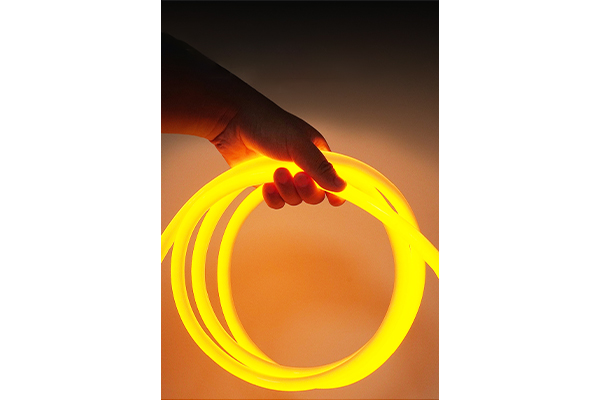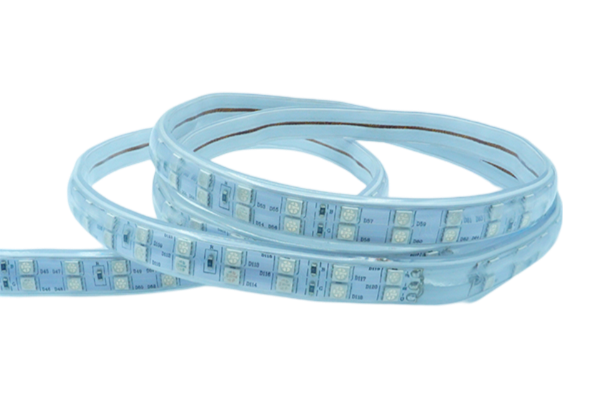How is the environmental performance of soft light strip?
Release Time : 2025-04-10
In today's society, with the increasing awareness of environmental protection, the environmental performance of various products has become an important consideration for consumers. As a lighting product widely used in home decoration, commercial lighting and other fields, soft light strip has also attracted much attention for its environmental performance.
Soft light strip has won wide recognition in the market with its soft FPC substrate, high-brightness LED light-emitting components and diversified installation methods. In terms of environmental performance, soft light strip also performs well.
First of all, from the perspective of material selection, the main components of soft light strip - LED and FPC, are environmentally friendly materials. As a semiconductor light-emitting component, LED does not contain harmful substances such as lead and mercury in its manufacturing process, and does not produce harmful gases during use, which is environmentally friendly. FPC, that is, flexible circuit board, is also made of environmentally friendly materials and has good recyclability. This means that when the soft light strip reaches its service life, its materials can be effectively recycled, reducing pollution to the environment.
Secondly, soft light strip performs well in energy consumption. Compared with traditional lighting fixtures, soft light strip uses more efficient LED light-emitting technology, which can greatly reduce energy consumption while providing the same lighting effect. This low-energy design not only helps to save electricity resources and reduce carbon emissions, but also conforms to the current global concept of energy conservation and emission reduction.
In addition, soft light strip has a long service life and reduces the frequency of replacement. Due to the use of high-quality LED light-emitting components and advanced manufacturing processes, the normal service life of soft light strip can reach tens of thousands of hours. This means that during long-term use, users do not need to frequently replace lamps, thereby reducing the environmental burden caused by the abandonment of lamps.
In addition, soft light strip has a variety of installation methods and is easy to disassemble and recycle. Whether it is embedded, ceiling-mounted or suspended installation, soft light strip can easily adapt. And when it needs to be replaced or recycled, its soft FPC substrate makes the disassembly process easier and does not cause additional damage to the environment.
It is worth mentioning that with the continuous advancement of technology, the environmental performance of soft light strip is still improving. For example, some high-end soft light strip products have adopted more advanced LED lighting technology to further improve the energy efficiency ratio; at the same time, some products use degradable or bio-based materials as substrates to further reduce the impact on the environment.
In summary, soft light strip performs well in environmental performance. Its use of environmentally friendly materials, low energy consumption design, long service life, and easy disassembly and recycling make it a lighting product that conforms to the current environmental protection concept. In the future development, we have reason to believe that soft light strip will continue to innovate and improve in environmental performance, bringing more green and sustainable lighting solutions to people's lives.
Soft light strip has won wide recognition in the market with its soft FPC substrate, high-brightness LED light-emitting components and diversified installation methods. In terms of environmental performance, soft light strip also performs well.
First of all, from the perspective of material selection, the main components of soft light strip - LED and FPC, are environmentally friendly materials. As a semiconductor light-emitting component, LED does not contain harmful substances such as lead and mercury in its manufacturing process, and does not produce harmful gases during use, which is environmentally friendly. FPC, that is, flexible circuit board, is also made of environmentally friendly materials and has good recyclability. This means that when the soft light strip reaches its service life, its materials can be effectively recycled, reducing pollution to the environment.
Secondly, soft light strip performs well in energy consumption. Compared with traditional lighting fixtures, soft light strip uses more efficient LED light-emitting technology, which can greatly reduce energy consumption while providing the same lighting effect. This low-energy design not only helps to save electricity resources and reduce carbon emissions, but also conforms to the current global concept of energy conservation and emission reduction.
In addition, soft light strip has a long service life and reduces the frequency of replacement. Due to the use of high-quality LED light-emitting components and advanced manufacturing processes, the normal service life of soft light strip can reach tens of thousands of hours. This means that during long-term use, users do not need to frequently replace lamps, thereby reducing the environmental burden caused by the abandonment of lamps.
In addition, soft light strip has a variety of installation methods and is easy to disassemble and recycle. Whether it is embedded, ceiling-mounted or suspended installation, soft light strip can easily adapt. And when it needs to be replaced or recycled, its soft FPC substrate makes the disassembly process easier and does not cause additional damage to the environment.
It is worth mentioning that with the continuous advancement of technology, the environmental performance of soft light strip is still improving. For example, some high-end soft light strip products have adopted more advanced LED lighting technology to further improve the energy efficiency ratio; at the same time, some products use degradable or bio-based materials as substrates to further reduce the impact on the environment.
In summary, soft light strip performs well in environmental performance. Its use of environmentally friendly materials, low energy consumption design, long service life, and easy disassembly and recycling make it a lighting product that conforms to the current environmental protection concept. In the future development, we have reason to believe that soft light strip will continue to innovate and improve in environmental performance, bringing more green and sustainable lighting solutions to people's lives.







